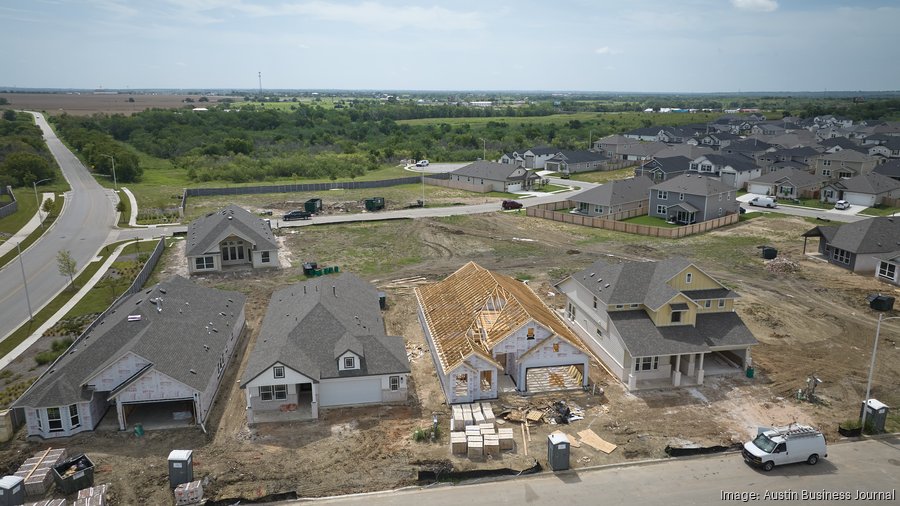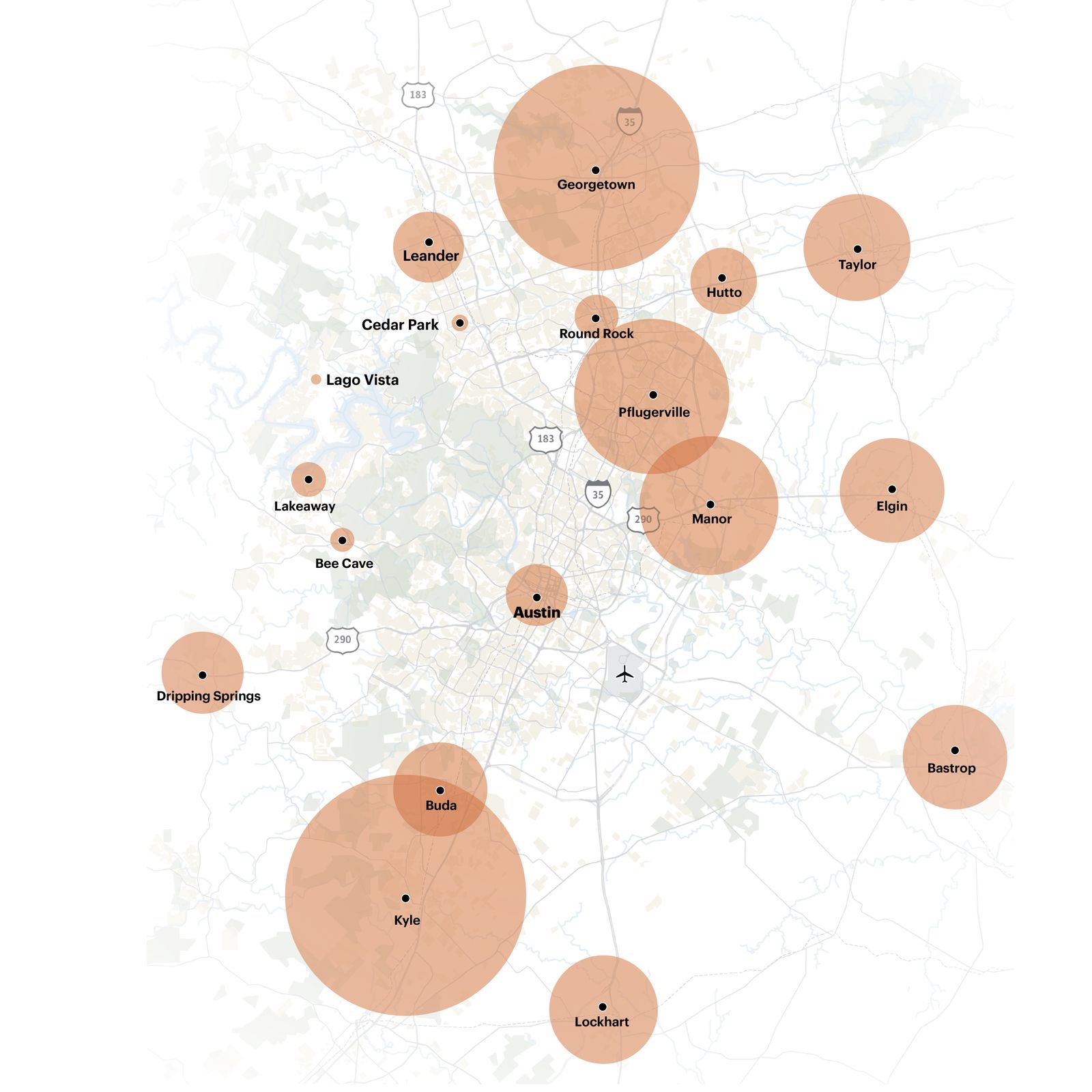
Austin Business Journal shares, "Some Austin suburbs promise new homes aplenty.
The Austin Business Journal reached out to the city of Austin and its 19 biggest suburbs to survey them on how many single-family homes they report in their development pipelines. Cities measure that differently, and the number includes counts at various stages of entitlement and construction. It's an imperfect science, but it helps gauge how cities are preparing for what's to come in their backyards.
Cities like Kyle (nearly 44,000 homes) and Georgetown (nearly 32,000) have robust pipelines. Taylor (about 8,500) and Buda (about 6,600) are next in line. Meanwhile, Cedar Park is nearing capacity and only reported 200.
Among the highest is Lockhart. The city grew 11% year-over-year to more than 17,000 people and is in Caldwell County, which was the ninth fastest growing county in the country. Officials there estimated that they have about 8,800 single-family homes on the way between ones that have been platted, proposed, approved or under construction.
HOUSING HOTSPOTS

City officials said Lockhart has been targeted because it's an untapped market that is near booming areas including Austin, San Marcos, Kyle and Buda. But Lockhart also had cheaper land prices, making it a "good mix of location and affordability," according to Planning Director David Fowler.
The city has taken many efforts to get out ahead of its growth. Leaders evaluated what peers did, in terms of master planning, and incorporated that into their regulations to ensure high-quality development. They redid their comprehensive plans, which included planning and water and wastewater, that's given them a roadmap to look not only ahead at what's to come but to take care of current and longtime residents as well.
"We are looking at how they have handled their growth," said Tatiana Salazar, the city's public information officer, of the nearby cities. "We're even looking at Austin just because that's something that was coming for a long time and was talked about for a long time and then it exploded. We're taking those lessons and are learning from them."
The growth has been twofold. On the one hand, there has been substantial residential and commercial growth, as well as growth from the existing businesses, which has allowed the city to do more in terms of services for its new and current residents. But long term, water supply is potentially an issue, along with increased sewage capacity. Officials are working on a long term regional water project to meet those needs.
Fowler also said they need more commercial and employment growth.
"We think our location on 130 and 183 is pretty well situated for that type of growth. Caldwell County is also growing pretty rapidly. Hopefully, we can capitalize on our location and that growth for both commercial, industrial, and other kinds of employment growth," he said.
Amy Link, director of development services in Cedar Park, said she started in 2007, which was toward the end of Cedar Park's rapid boom. They were able to stay ahead of it by keeping their comprehensive plan up to date, identifying areas that they needed to have infrastructure, and looking at land use percentages – advice she said she would pass along to other cities when thinking "long term."
But she called securing water rights "critical," along with having that plan in place for utilities and roads years in advance.
"The planning tools that we had in place have definitely ensured that the growth that we experienced and continue to experience can be accommodated through the infrastructure that we have in place or that's planned because of the long-term planning that we've done with the comp plan," Link said.
Now, the city is almost built out. She said Cedar Park only has about 400 acres left for single-family residential. There isn't much space for them to grow, as annexation efforts are hampered by being landlocked on all four sides.
What's likely next to come is density. They've identified some large tracts within the community that were undeveloped, and residents gave feedback when in 2014 that they want to see walkable mixed-use spaces, a la the NFM development or a potential Life sciences campus. She said those could incorporate residential uses, like urban or podium-style apartments incorporated into that.
Source: Austin Business Journal
Written by: Justin Sayers & Cody Baird
Published: August 16, 2025
Posted by Grossman & Jones Group on
Leave A Comment